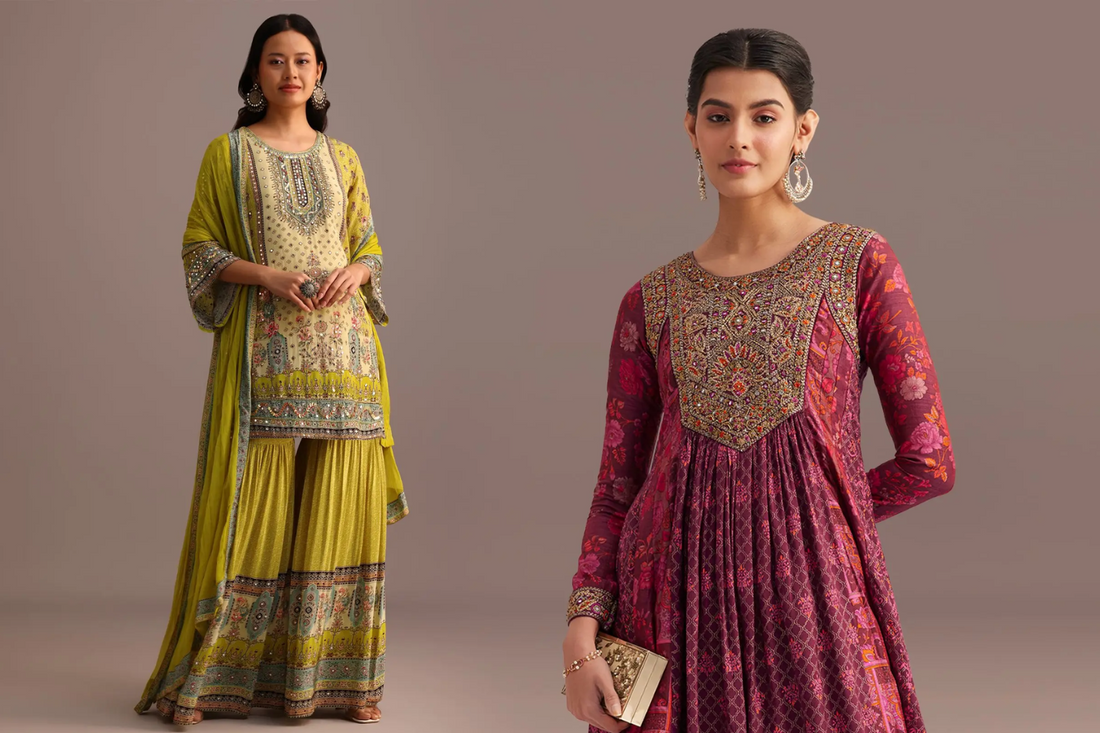
The Timeless Appeal of Punjabi Ethnic Wear Through the Ages
The ethnic fashion in Punjab is full of history, with its richness of history, tradition and the changing fashion to the rich culture of the region. These garments have symbolized identity, feast and daily grace even in the rural village to the streets of cities such as Kotkapura. The Punjabi suits which are characterized by the flowing outlines and elaborate designs have their origins in ancient times when the fabrics such as cotton and silk were hand woven by the aborigines. Informed by the Mughal influences and later by the colonial influences, these garments were adorned with the elements like phulkari embroidery that used the geometrical figures in nature, including flower, bird and wheat fields that refer to the agricultural core.
Punjabi ethnic clothes changed with the social changes as centuries were rolling by. Salwar kameez became a staple in the 19th century amongst women as it provided comfort and modesty, besides granting the freedom of movement. This practical design was later advanced in the post-independence period with the designers experimenting with more bold colors and fusion works. Nowadays, it is possible to observe how the traditional dupattas, which were used to be a simple veil, today are an adaptable accessory which is worn in a variety of different forms, adapted to the new styles and lifestyle. Even the fabrics speak a story: mulmul cotton in summer to be light, velvet to keep one warm in winter, and the georgette to make a flow ethereal in festive events.
Exploring Key Elements of Design
The persistent nature of Punjabi ethnic fashion is its detailing. Some of these embroidery methods such as gota patti when metallic thread is woven over the borders, give it a touch of extravagance but without extravagance to the wearer. These techniques are passed down through generations and one can underscore the prowess of artisans who devote hours to work on each art work. The Fiza Boutique in Kotkapura preserve this heritage by buying the materials that reflect the culture of these traditions and making sure that each garment interacts with the soul of Punjab.
Color is also a crucial ingredient. The color choices like mustard yellow, deep maroon, and emerald green are not only aesthetic but also have a cultural meaning, yellow as a symbol of good fortune, red as a symbol of marriage happiness. These should be combined with small jewelry, such as jhumkas or bindis, to make a whole look which is both natural and modern.
Modern Interpretations and Styling Tips
Punjabi ethnic wear has crossed borders in the present globalized world meaning that it is worn in international runways, as well as on daily dresses. The younger generations who are interested in fusion styles include the adoption of traditional kameez with jeans or introduction of western cuts to the salwars. In case of weddings, mirror-worked elaborate lehengas can be used to express the happiness of the day, whereas more simple suits can be used in the office or on casual outings.
To dress these items, one should take into account the occasion. In order to keep cool and feel comfortable during the family meeting, choose non-sticky and breathable clothes with few decorations. One can wear a light jacket over a suit and make an old and new twist. The details count, and a minimalist bangle is a simple but elegant accessory. With the ever-changing fashion trends, Punjabi ethnic wear will always be a symbol of survival, they adapted and managed to cling to their origins.
This trend encourages all to venture into their cultural closets and find things that appeal to them. Pieced together by historical richness or the contemporary cool, these clothes provide the means of attachment to the past in a significant manner.

